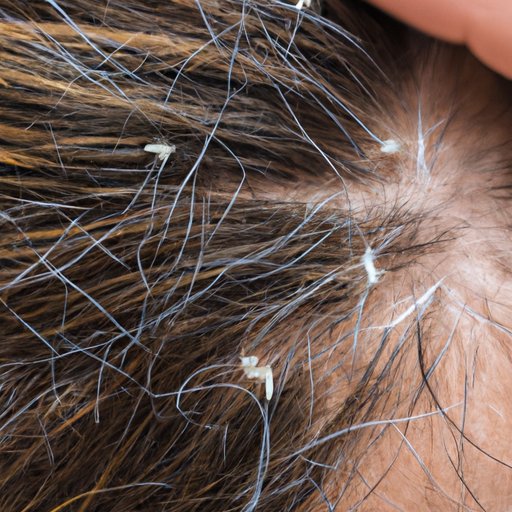Introduction
Lice are tiny insects that infest human hair and scalp, causing itchiness and discomfort. They are highly contagious and transferable from person to person through direct contact or sharing of personal items like combs and hats. Checking yourself for lice regularly is vital, even if you don’t have any symptoms. This article will provide a step-by-step guide on how to check yourself thoroughly for lice.
How to Inspect Your Scalp and Hair for Lice
Inspecting your scalp and hair for lice can be a daunting task, but with the right tools and a systematic approach, you can do it easily. Here are some steps you can follow:
- Start by washing your hair with a regular shampoo, then dry it completely.
- Using a bright light source and a magnifying glass, examine your scalp and hair for live lice, nits (lice eggs), and eggs. Nits are oval-shaped and tiny, usually found glued to hair shafts near the scalp and appear yellow-brownish.
- Part your hair into small sections and use a fine-toothed lice comb to comb through each section of your hair from root to tip. Be sure to wipe the comb on a white cloth between sections to inspect for lice and nits that comes out.
- Focus on sites, including behind the ears, the nape of the neck, and the crown of your head.
Tools for Making the Process Easier
It is easier to check for lice if you have some tools that can assist you in the process. These include:
- Lice comb: A fine-toothed comb that helps detect lice and remove them from hair.
- Hair clips: Use hair clips to separate hair sections for easier and systematic parts.
- Gloves: Gloves can prevent spreading lice to other parts of your body or other people.
Common Myths and Misconceptions
There are several myths and misconceptions surrounding lice infestation. Here are some of them and why they are not accurate:
- Lice only infest dirty people: This is a common myth. Anyone can get lice, whether clean or dirty. Lice infestation has nothing to do with personal hygiene.
- Lice jump from person to person: Lice can’t fly or jump like fleas do. They can only crawl from one hair to another hair.
- Lice spread disease: Lice do not spread disease, but they can cause itchiness and discomfort.
Prevention and Treatment of Lice
If you discover that you have lice, you need to take immediate measures to prevent it from spreading and treat it. Here are some tips:
- Wash your hair: Wash your hair with a specialized shampoo that contains lice-killing chemicals.
- Avoid sharing personal items: Do not share combs, hats, or any other personal item with anyone.
- Use natural remedies: Tea tree oil and eucalyptus oil are natural remedies that have been shown to help prevent lice infestation.
- Use prescription medications: If over the counter products are not working, see your doctor for prescription medications.
Final Advice
If you find that you have lice, it is crucial to notify others who you may have had contact with as they may also have contracted the infection unknowingly. Also, be sure to be vigilant about checking yourself and others regularly for lice. Remember, early detection is critical to preventing the spread of lice.
Conclusion
Lice infestation is not uncommon, and anyone can have it. Ignoring the symptoms can lead to the spread of the infection, making it necessary to check yourself and others regularly for lice. Follow these steps, equip yourself with the right tools, and stay vigilant to prevent the spread of this common hair and scalp problem.
